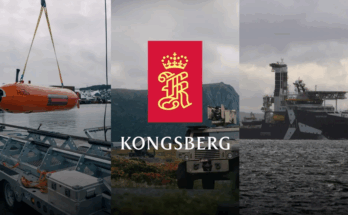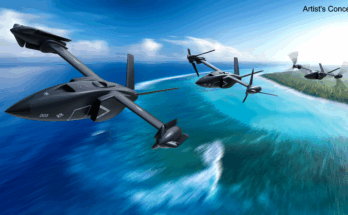
After several years of restructuring its operations, a new Hyundai Heavy Industries Group has emerged. Through a complex shareholding arrangement, the various operations have been collated under one banner, with Hyundai Heavy Industries regarded as the centerpiece of the group.
The shipbuilding operations continue under the Hyundai Heavy Industries banner, with the other operations eponymously named by function – Hyundai Electric & Energy Systems, Hyundai Construction Equipment, and Hyundai Robotics, which has been renamed Hyundai Heavy Industries Holdings and acts as the headquarters of the various operations. With the divisions now operating pretty much as subsidiaries, they can focus more readily on their specific markets. In addition, the division of operations makes it much easier to divest them and raise capital.
With the pending acquisition of Daewoo Shipbuilding & Marine Engineering, HHI’s title as world’s largest shipbuilder will be unassailable. HHI announced the roughly $2 billion deal in early 2019. In yet another complex deal, a new company has been formed. This company, Korea Shipbuilding & Offshore Engineering, will act as a subholding company of Hyundai Heavy Industries Holdings that oversees the shipbuilding and offshore businesses. Meanwhile, Hyundai Heavy Industries, which previously oversaw all shipbuilding activities, will focus on its own operations. Once the Daewoo acquisition is complete, Korea Shipbuilding & Offshore Engineering will have oversight of four shipyards: Hyundai Heavy Industries, Hyundai Samho Heavy Industries, Hyundai Mipo Dockyard, and Daewoo Shipbuilding.
The Daewoo acquisition still has a way to go, with antitrust applications currently in the works at home in South Korea and with numerous other countries such as Japan, China, Kazakhstan, and members of the European Union. This could be tricky to pull off, as the merger will reshape the global shipbuilding industry with its dominant position.
The corporate shuffle notwithstanding, not much will change in HHI’s naval shipbuilding operations. In its home market, the unstable behavior of its northern neighbor continues to fuel defense procurement and modernization efforts in South Korea.
As a result, the ROK Navy has ramped up production of its new Incheon (aka FFX) class frigates. HHI has been tapped to build the first three vessels of this class, with Daewoo building two of the second batch. At present, the construction schedule appears to have reverted to the original plan to build 20 of these ships in groups of six, eight, and six ships, respectively. Competition for these orders among Korea’s shipyards is expected to be fierce, but HHI has an advantage – especially if the Daewoo deal is consummated – thanks to its experience with these ships.
These warships have also garnered their first export order, with a two-ship sale to the Philippines. Following years of negotiation, Manila placed an order for two frigates in 2016. This is an important milestone for the Korean program, since it establishes the Incheon class as a viable candidate on the international market. This could well translate into numerous additional orders. Pakistan and Indonesia are rumored to be interested in the type.
With the accelerated need for new warships high on South Korea’s priority list, HHI can likely look forward to a steady revenue stream for its warship operations for years to come.
A military history enthusiast, Richard began at Forecast International as editor of the World Weapons Weekly newsletter. As the Internet grew in importance as a research tool, he helped design the company's Forecast Intelligence Center and currently coordinates the EMarket Alert newsletters for clients. Richard also manages social media efforts, including two new blogs: Defense & Security Monitor, covering defense systems and international issues, and Flight Plan, which focuses on commercial aviation and space systems. For over 30 years, Richard has authored the Defense & Aerospace Companies, Volume I (North America) and Volume II (International) services. The two books provide detailed data on major aerospace and defense contractors. He also edits the International Contractors service, a database that tracks all the contractors involved in the programs covered in the FI library. More recently he was appointed Manager, Information Services Group (ISG), a new unit that encompasses developing outbound content for both Forecast International and Military Periscope.




